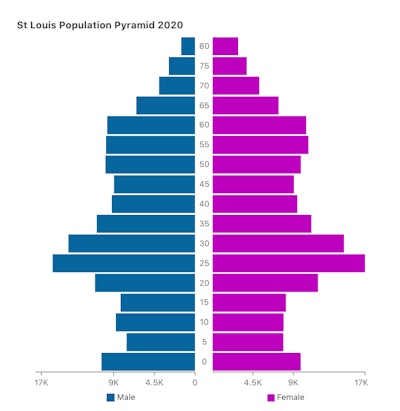ST. LOUIS –
Many restaurants operate on a first come, first served basis. Shoppers in the United States expect this; however, this orderly approach to gaining access to service lost standing in Italy. As COVID-19 spreads throughout the Italian countryside, the demand for respirators and ICUs exceeds the supply. In this case if demand exceeds supply, it increases the risk of death, especially for the elderly. Evidence from the outbreak indicates older adults experienced higher death rates from the virus. According to the Organisation for Economic Co-operation and Development, Italy’s population is the second oldest in the world behind Japan. Combined with a strong family culture where young persons engage with their grandparents and older relatives, it creates a condition ripe for the spread of the virus. The Washington Post reports that in the midst of the shortfall of intensive care capacity, the Italian Critical Care Society endorsed using age guidelines regarding access to oxygen-generating machines. Specifically, the group supported doctors that assign priority ICU access to individuals with greater life expectancy. Enter triage and young adults first—exit first come, first served. The experiences in Italy and in other countries represent important lessons learned for residents of this country and the St. Louis region.
For example, the Center for Disease Control and Prevention (CDC) COVID-19 Response Team reported that in China the vast majority of severe cases and fatalities occurred among the older populations. In contrast, people 19 years old and younger have had milder symptoms, and this age group only makes up 0.1% of deaths. This suggests that age is directly related to the severity of COVID-19’s impact on individuals in the United States and the rest of the world. Many commenters jumped to the wrong conclusion insisting that the virus did not harm young people while ignoring the potential for long-term damage to vital organs. Furthermore, too many failed to take seriously the role that children, teenagers, and young adults play in transmitting the virus to older adults. Pictures of beaches filled with young adults affirm the lack of understanding into their role as virus transmitters.
The CDC study provides insight into the United States context. Officials analyzed COVID-19 cases in the country by age group and severity in the period between February 12 and March 16, 2020, with a total of 4,266 cases reported in the United States. Of the deaths reported, 80% of the people were at least 65 years of age. Only 5% of the reported cases occurred in people between 0 and 19 years old. Additionally, 65 plus-year-old patients made up 31% of cases in the United States at the time—45% of the hospitalizations and 53% of the ICU admissions. The CDC report acknowledges the lack of data in some areas, such as information related to underlying health conditions. This limitation is important as older patients with diabetes, high blood pressure, heart problems, and other chronic illnesses have higher risk of more severe outcomes if infected with the virus.
This snapshot of the age distribution in St. Louis City provides a numerical picture of our community.
















